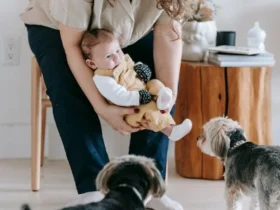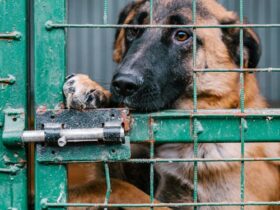Bringing a dog into your life is an incredibly rewarding experience, but it also comes with a host of new responsibilities. For first-time dog owners, the transition can be both exciting and overwhelming. To help you start off on the right paw, we’ve compiled 14 essential tips that will guide you through the early stages of dog ownership and set you up for success.
1. Choose the Right Breed for Your Lifestyle
Consider Activity Levels
Different dog breeds have varying exercise needs. Active breeds like Labrador Retrievers and Border Collies require plenty of physical activity and mental stimulation. In contrast, breeds such as French Bulldogs or Bichon Frises are often more adaptable to a sedentary lifestyle. Assess your own activity level and living situation to choose a breed that fits your lifestyle.
Size and Space
Consider the size of your home and yard. Large breeds typically need more space to move around and might not be suitable for apartment living. Smaller breeds or those with lower exercise needs may be more appropriate if you live in a smaller space.
2. Prepare Your Home
Dog-Proof Your Space
Dogs are naturally curious and may get into things they shouldn’t. Before bringing your new dog home, ensure that your space is dog-proofed. Remove toxic plants, secure electrical cords, and put away small objects that could be swallowed. Create a safe area where your dog can explore and feel secure.
Essential Supplies
Stock up on essential supplies, including a comfortable bed, food and water bowls, toys, grooming tools, and a leash and collar. Ensure you also have appropriate food and treats suited to your dog’s age, size, and dietary needs.
3. Establish a Routine
Feeding Schedule
Consistency is key to a well-adjusted dog. Establish a regular feeding schedule and stick to it. Dogs thrive on routine, and having set meal times helps with digestion and house training.
Exercise and Playtime
Incorporate daily exercise into your routine. Whether it’s a walk, playtime in the yard, or interactive games, regular physical activity is crucial for your dog’s health and happiness.
4. Invest in Training
Basic Commands
Start with basic commands like “sit,” “stay,” “come,” and “leave it.” These commands form the foundation of good behavior and safety. Training should be consistent, positive, and reward-based to encourage learning.
Socialization
Socialization is vital for a well-adjusted dog. Expose your dog to different people, animals, and environments to help them become comfortable in various situations. This will help prevent behavioral issues and improve their overall confidence.
5. Visit the Veterinarian
Initial Check-Up
Schedule an initial veterinary visit as soon as you bring your dog home. The vet will perform a health check, administer any necessary vaccinations, and discuss a wellness plan. Regular vet visits are essential for monitoring your dog’s health and catching any issues early.
Preventive Care
Discuss preventive care with your vet, including vaccinations, flea and tick prevention, and dental care. Establishing a routine for these services helps keep your dog healthy and free from common ailments.
6. Create a Safe and Comfortable Space
Designate a Sleeping Area
Provide a designated sleeping area where your dog can retreat to rest and feel secure. A comfortable bed in a quiet, low-traffic area of your home will help your dog feel settled and reduce anxiety.
Toys and Enrichment
Offer a variety of toys to keep your dog mentally stimulated. Puzzle toys, chew toys, and interactive games help prevent boredom and provide an outlet for natural behaviors.
7. Understand Dog Behavior
Body Language
Learn to read your dog’s body language to understand their feelings and needs. Signs of stress, fear, or aggression can often be detected through their posture, tail position, and facial expressions. Recognizing these signs can help you address issues before they escalate.
Positive Reinforcement
Use positive reinforcement to encourage good behavior. Reward-based training methods, such as treats and praise, are effective for building trust and encouraging desired behaviors.
8. Establish House Training
Potty Training
Consistency is crucial for successful potty training. Take your dog outside frequently, especially after meals, naps, or playtime. Praise and reward your dog for doing their business outside. Be patient and avoid punishment for accidents; instead, focus on reinforcing positive behavior.
Crate Training
Crate training can aid in house training and provide your dog with a safe, secure space. Use the crate as a positive environment by feeding your dog in it and providing toys and comfortable bedding.
9. Groom Regularly
Brushing
Regular brushing helps keep your dog’s coat healthy and reduces shedding. The frequency and type of brushing depend on your dog’s coat type. Long-haired breeds may require daily brushing, while short-haired breeds may need less frequent grooming.
Nail Trimming and Bathing
Regular nail trimming is important to prevent overgrowth and discomfort. Bathing should be done as needed based on your dog’s activity level and coat type. Use dog-specific shampoos to avoid irritating their skin.
10. Ensure Identification
ID Tags and Microchipping
Equip your dog with an ID tag that includes your contact information. Microchipping is also highly recommended as a permanent form of identification in case your dog gets lost. Ensure your contact details are up-to-date with the microchip registry.
11. Socialize with Other Pets
Introducing New Pets
If you have other pets, introduce them to your new dog slowly and carefully. Supervise initial meetings and allow both the new dog and existing pets to adjust at their own pace. Proper introductions can help prevent conflicts and create a harmonious multi-pet household.
Shared Spaces
Ensure that each pet has its own space and resources to prevent competition and reduce stress. Separate feeding areas, beds, and toys can help maintain harmony among pets.
12. Maintain Health Records
Track Vet Visits
Keep detailed records of your dog’s veterinary visits, vaccinations, and treatments. This information is crucial for tracking your dog’s health and for future veterinary care.
Emergency Plan
Have an emergency plan in place, including the contact information for your vet and a list of emergency clinics. Knowing what to do in case of an emergency can make a significant difference in your dog’s outcome.
13. Budget for Your Dog
Ongoing Costs
Be prepared for the ongoing costs of dog ownership, including food, grooming, vet visits, and supplies. Creating a budget can help you manage these expenses and ensure you can provide for your dog’s needs throughout their life.
Emergency Funds
Set aside funds for unexpected expenses such as medical emergencies or urgent repairs. Having an emergency fund helps ensure that you can handle any unforeseen costs that arise.
14. Enjoy the Bonding Experience
Quality Time
Spend quality time with your dog to strengthen your bond. Engage in activities you both enjoy, whether it’s playing fetch, going for walks, or simply relaxing together. Building a strong, positive relationship with your dog enhances their well-being and your enjoyment of pet ownership.
Continued Learning
Dog ownership is a continuous learning experience. Stay informed about dog care, training techniques, and behavioral issues to provide the best care for your dog. Joining a local dog owner’s group or participating in training classes can offer additional support and resources.










Leave a Reply